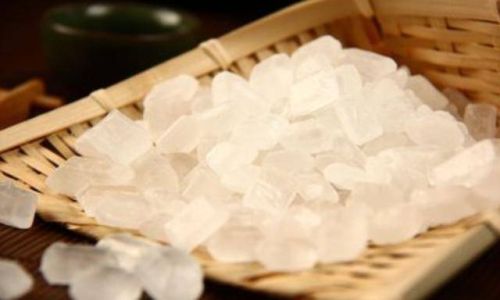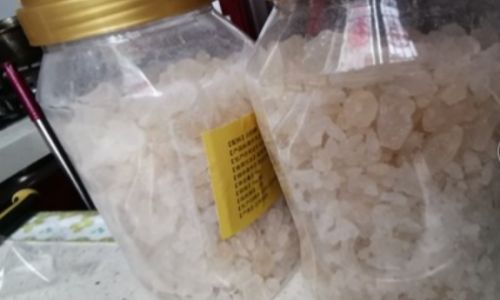Table of content
Rock sugar, also known as crystal sugar or rock candy, is a common ingredient in kitchens worldwide. Its crystalline structure and mild sweetness make it a staple for beverages, desserts, and savory dishes. However, questions about its storage often arise, particularly whether refrigeration is advisable. This article explores the science behind rock sugar’s properties, the impact of refrigeration, and best practices for maintaining its quality and longevity.
Understanding Rock Sugar’s Composition
Rock sugar is primarily composed of sucrose, a disaccharide derived from sugarcane or sugar beets. Unlike granulated sugar, which is processed into fine crystals, rock sugar forms larger, irregular crystals through a slow crystallization process. This structure gives it a distinctive appearance and a slower dissolution rate, making it ideal for applications where a gradual release of sweetness is desired, such as in tea or stews.
Sucrose is inherently hygroscopic, meaning it absorbs moisture from its surroundings. This trait is crucial for its preservation, as excess moisture can lead to clumping, discoloration, or even fermentation if microorganisms are present. The balance between humidity and temperature, therefore, plays a pivotal role in determining how rock sugar should be stored.

The Refrigerator Environment: Friend or Foe?
Refrigerators are designed to slow bacterial growth and extend the shelf life of perishable foods by maintaining temperatures below 40°F (4°C). However, they also create a high-humidity environment, especially in crisper drawers or areas where condensation occurs. For rock sugar, this combination of cold and moisture poses a dual challenge.
Moisture Absorption
The hygroscopic nature of rock sugar means it will readily absorb any moisture in the air. In a refrigerator, where humidity levels can exceed 50%, even short-term exposure may cause the sugar to clump or harden. Over time, this can transform loose crystals into a solid mass, rendering it difficult to use.
Temperature Fluctuations
Frequent opening and closing of the refrigerator door cause temperature fluctuations. When warm air enters the fridge, it condenses on cold surfaces, including storage containers. If rock sugar is stored in an airtight container, this risk is minimized. However, imperfect seals or partial exposure can lead to moisture infiltration.
Odor Absorption
Refrigerators often house strong-smelling foods like onions, garlic, or leftover meals. Rock sugar, being porous, may absorb these odors if not stored in a sealed container. This can alter its taste and aroma, compromising its culinary versatility.
Pros and Cons of Refrigerating Rock Sugar
While refrigeration is generally unnecessary for rock sugar, certain scenarios may warrant it. Below is a breakdown of the advantages and disadvantages:
Advantages

- Humidity Control: In extremely humid climates, refrigeration might slow moisture absorption if the sugar is stored in an airtight container.
- Pest Prevention: Refrigerators are less likely to attract insects or rodents compared to pantry shelves.
Disadvantages
- Clumping Risk: Even in sealed containers, residual moisture can cause clumping over time.
- Condensation: Temperature changes may introduce moisture during retrieval.
- Space Constraints: Refrigerators are already crowded; dedicating space to sugar may be impractical.
Alternative Storage Methods
For most households, pantry storage is optimal. Follow these guidelines:
Airtight Containers
Transfer rock sugar to glass jars or food-grade plastic containers with tight-fitting lids. This creates a physical barrier against moisture and pests.
Cool, Dry Location
Store containers away from direct sunlight, stoves, or dishwashers, which emit heat and humidity. A pantry shelf or kitchen cabinet is ideal.
Avoid Freezing
Freezing rock sugar is inadvisable, as extreme cold can cause internal moisture to crystallize, leading to irreversible clumping.
Humidity Control
In tropical regions, use silica gel packets inside containers to absorb excess moisture. Replace them every few months.

Debunking Myths About Sugar Storage
Myth 1: Refrigeration Prevents Clumping
While cold temperatures slow microbial activity, they do not prevent hygroscopicity. Clumping is more effectively mitigated by proper sealing and humidity control.
Myth 2: Rock Sugar Expires
Pure sucrose does not spoil, but improper storage can render it unusable. Discoloration or off-odors indicate contamination, not expiration.
Myth 3: All Sugars Store the Same Way
Brown sugar, powdered sugar, and rock sugar have different moisture contents and textures. Brown sugar, for example, benefits from refrigeration due to its molasses content, which softens at room temperature. Rock sugar, however, requires dry conditions.
Restoring Clumped Rock Sugar
If clumping occurs, it is reversible:
- Break Apart Manually: Use a mortar and pestle or a rolling pin to crush large chunks.
- Bake at Low Heat: Spread clumped sugar on a baking sheet and heat at 150°F (65°C) for 10–15 minutes.
- Add Apple Slices: Place a slice of fresh apple in the container; moisture from the apple will soften the sugar over 24 hours. Remove the slice afterward to prevent mold.
The Role of Packaging
Commercial rock sugar often comes in plastic bags, which offer minimal protection against humidity. Repackaging into airtight containers immediately after purchase is advisable. For bulk purchases, divide the sugar into smaller portions to reduce exposure to air when scooping.
Culinary Applications and Storage Interaction
The way rock sugar is used can influence storage preferences. For example:

- Brewing Tea: Loose crystals dissolve slowly, making pantry storage convenient for frequent use.
- Baking: Clumped sugar may require sifting, but this is manageable if stored properly.
- Candy Making: Refrigeration is unnecessary here, as precise temperature control during cooking is more critical.
Environmental Considerations
Refrigerators consume energy, and storing non-perishable items like rock sugar unnecessarily increases carbon footprints. Opting for pantry storage aligns with sustainability goals.
Expert Recommendations
Culinary experts and food scientists unanimously agree that rock sugar thrives in dry, cool environments. The International Association of Culinary Professionals (IACP) states, “Refrigeration is rarely warranted for shelf-stable dry goods like sugar, flour, or salt. Proper sealing and location are paramount.”
Conclusion
The question of whether rock sugar belongs in the refrigerator hinges on understanding its hygroscopic nature and the refrigerator’s environment. While refrigeration is not inherently harmful if containers are airtight, it introduces unnecessary risks of moisture absorption and odor tainting. For most users, a pantry shelf with a sealed container remains the optimal solution.
By prioritizing airtight packaging, a stable temperature, and low humidity, rock sugar can retain its quality indefinitely. Should clumping occur, simple restoration techniques exist, making refrigeration an avoidable step. As with all food storage, the key lies in balancing convenience with scientific principles to ensure culinary success.
In summary, rock sugar and refrigerators can coexist—but only under meticulous conditions. For the average household, the pantry offers a safer, more practical haven for this timeless sweetener.






0 comments